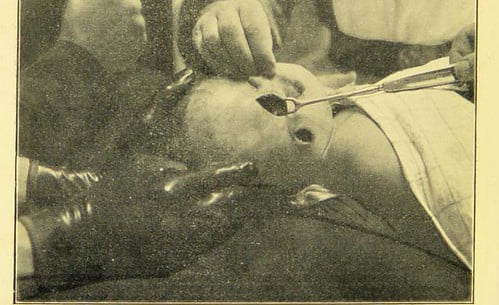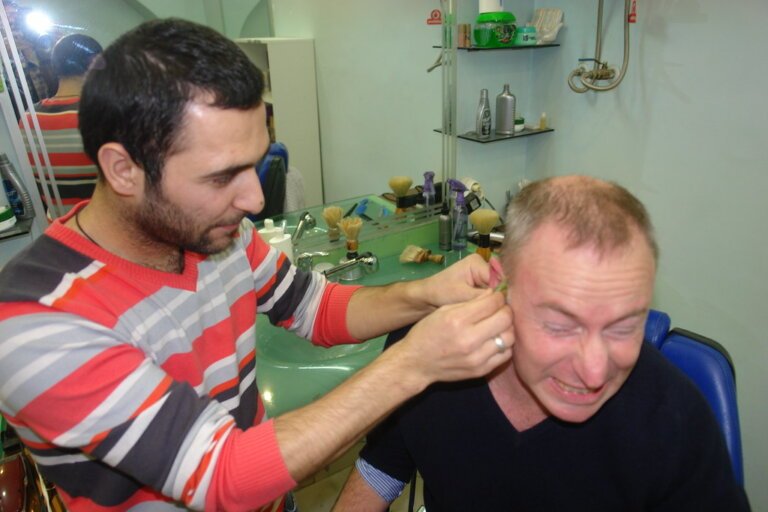Never Stop Learning: The Role of Continuing Education in Microsuction
Continuing education plays a crucial role in the field of microsuction. As an advanced technique for ear wax removal, microsuction requires practitioners to stay updated with the latest developments, techniques, and safety protocols. In this article, we will explore the importance of continuing education in microsuction and how it enhances the quality of care provided to patients.
The Dynamic Nature of Microsuction
Microsuction is a specialized procedure used to remove excess ear wax and debris from the ear canal. It involves using a microscope and a gentle suction device to ensure precision and safety. However, the field of microsuction is not static; it constantly evolves with new advancements in technology, best practices, and understanding of ear anatomy.
The dynamic nature of microsuction necessitates the need for practitioners to engage in continuing education. By staying updated with the latest advancements and techniques, practitioners can ensure that they are providing the most effective and efficient ear wax removal treatment for their patients. This includes learning about new equipment and instruments that can improve the accuracy and safety of the procedure.
In addition, continuing education allows practitioners to stay informed about the latest research and findings in the field of microsuction. By understanding the evolving understanding of ear anatomy, practitioners can adapt their techniques and approaches to provide optimal care for each individual patient. This ongoing learning and adaptation are critical to maintaining the highest standards of patient care in the field of microsuction.
Staying Updated with Advancements and Techniques
Continuing education allows microsuction practitioners to stay updated with the latest advancements and techniques in the field. By attending seminars, workshops, and conferences, they can learn about new equipment, instruments, and procedural improvements that can enhance patient outcomes.
Attending these educational events provides practitioners with the opportunity to interact with experts in the field and gain first-hand knowledge about the latest advancements. They can observe live demonstrations, ask questions, and receive hands-on training to improve their skills and knowledge.
Furthermore, continuing education fosters a culture of innovation and improvement within the microsuction community. By exchanging ideas and knowledge with their peers, practitioners can contribute to the development of new techniques and best practices. This collaboration leads to the continuous improvement of the field, benefiting both practitioners and patients alike.
To ensure that practitioners are well-informed about advancements and techniques, continuing education providers play a crucial role. These providers develop comprehensive curricula and organize workshops and seminars that cover the latest developments in the field. They collaborate with industry experts to deliver evidence-based education, ensuring that practitioners receive the highest quality of training.
Enhancing Patient Safety
Patient safety is of paramount importance in any medical procedure, and microsuction is no exception. By actively participating in continuing education programs, practitioners can acquire the necessary knowledge and skills to ensure the safety of their patients.
Continuing education equips practitioners with the ability to identify potential risks and handle complications effectively. They learn about the latest infection control measures and safety protocols to minimize the likelihood of adverse events. By staying up-to-date with these practices, practitioners can provide a safe environment for their patients and reduce the risk of complications during the microsuction procedure.
In addition, continuing education emphasizes the importance of ongoing assessment and refinement of skills. Practitioners are encouraged to engage in self-reflection and evaluation of their techniques to ensure that they are providing the highest standard of care. By continuously learning and improving, practitioners can enhance patient safety and promote positive outcomes.
Promoting Best Practices
Continuing education acts as a platform for sharing and promoting best practices in microsuction. Through educational forums, professionals can discuss evidence-based techniques and guidelines, facilitating standardized care across the industry.
By participating in continuing education, practitioners can learn about the latest research and evidence supporting specific techniques and approaches. They can then incorporate these best practices into their own practice, ensuring that they are providing the most effective and efficient care for their patients.
Furthermore, continuing education encourages practitioners to critically evaluate their current practices and compare them to established best practices. This self-assessment allows them to identify areas for improvement and make necessary adjustments to optimize patient outcomes. By adhering to best practices, practitioners can minimize complications, enhance treatment outcomes, and provide consistent quality care to their patients.
Expanding Knowledge and Expertise
Continuing education provides microsuction practitioners with opportunities to broaden their knowledge and expertise beyond the core concepts. They can explore related areas such as audiology, ear anatomy, and patient communication skills.
By expanding their knowledge in these areas, practitioners can offer a more holistic approach to patient care. They can address individual needs and concerns effectively, taking into account the broader context of the patient’s overall ear health and well-being.
For example, by understanding audiology principles, practitioners can better assess and manage any underlying hearing issues that may be related to excessive ear wax. Similarly, a comprehensive understanding of ear anatomy enables practitioners to accurately identify and treat specific ear conditions.
Moreover, effective communication skills are essential in providing patient-centered care. By improving their communication skills through continuing education, practitioners can establish rapport with their patients, educate them about the procedure, and address any fears or concerns they may have. This enhanced communication promotes trust and ensures that patients are well-informed and comfortable throughout the microsuction process.
Aiding Professional Development
Continuing education is a vital component of professional development for microsuction practitioners. It enables them to enhance their skills, update their knowledge, and acquire new certifications.
By actively participating in continuing education programs, practitioners demonstrate their commitment to delivering high-quality care and maintaining professional standards. This ongoing learning and development not only benefit the practitioners themselves but also their patients and the overall reputation of the microsuction profession.
Continuing education offers practitioners the opportunity to stay abreast of the latest research, technologies, and best practices. It allows them to expand their scope of practice and offer a wider range of services to their patients. By continuously updating their skills and knowledge, practitioners can adapt to the evolving needs of their patients and provide the best possible care.
Implementing Ethical Practice
Ethical considerations are essential in the field of microsuction, and continuing education helps reinforce ethical practice. Professionals who engage in ongoing learning are more likely to stay informed about ethical guidelines, patient rights, and privacy regulations.
By understanding and adhering to ethical principles, practitioners ensure that they approach their work with integrity and respect for patient autonomy. They understand the importance of patient confidentiality and privacy, and they prioritize informed consent in every aspect of their practice.
Continuing education provides opportunities for practitioners to explore ethical dilemmas and engage in discussions about ethical decision-making. By critically examining real-life scenarios and case studies, practitioners can develop a deeper understanding of ethical practice and apply this knowledge to their own work.
The Role of Continuing Education Providers
Continuing education providers play a vital role in supporting microsuction practitioners in their quest for knowledge and skill enhancement. They develop comprehensive curricula, organize workshops and seminars, and offer online resources to meet the diverse learning needs of professionals.
These providers collaborate with industry experts to deliver evidence-based education, ensuring the highest quality of training for microsuction practitioners. They stay up-to-date with the latest advancements and research in the field, curating educational content that reflects the current best practices and standards.
Continuing education providers also facilitate networking opportunities for practitioners. By bringing together professionals from various backgrounds and experiences, they create a platform for collaboration, knowledge exchange, and mentorship.
Conclusion
In conclusion, continuing education plays a significant role in the field of microsuction by ensuring practitioners stay up-to-date with advancements, techniques, and safety protocols. It enhances patient safety, promotes best practices, and aids in the professional development of microsuction practitioners. By investing in continuous learning, professionals demonstrate their commitment to delivering high-quality care and improving patient outcomes.
The dynamic nature of microsuction necessitates a culture of never-ending learning, ensuring that practitioners are well-equipped to provide the best possible care to their patients. Through continuing education, practitioners can expand their knowledge, refine their skills, and stay at the forefront of advancements in the field. This ongoing commitment to learning and development benefits both practitioners and their patients, ultimately improving the overall quality of care in the field of microsuction.
FAQ
Q: Why is continuing education important in the field of microsuction?
A: Continuing education is important in the field of microsuction because it allows practitioners to stay updated with the latest advancements, techniques, and safety protocols, ensuring they provide the most effective and efficient care to their patients.
Q: How does continuing education enhance patient safety?
A: Continuing education equips practitioners with the necessary knowledge and skills to identify potential risks, handle complications effectively, and minimize the likelihood of adverse events. It also emphasizes ongoing assessment and refinement of skills to ensure the highest standard of care.
Q: What role do continuing education providers play in microsuction?
A: Continuing education providers develop comprehensive curricula, organize workshops and seminars, and collaborate with industry experts to deliver evidence-based education. They ensure that practitioners receive the highest quality of training and stay up-to-date with the latest advancements and best practices.
Q: What are the benefits of continuing education for microsuction practitioners?
A: Continuing education allows practitioners to stay updated with advancements and techniques, expand their knowledge and expertise, enhance their professional development, implement ethical practice, and provide the best possible care to their patients.







